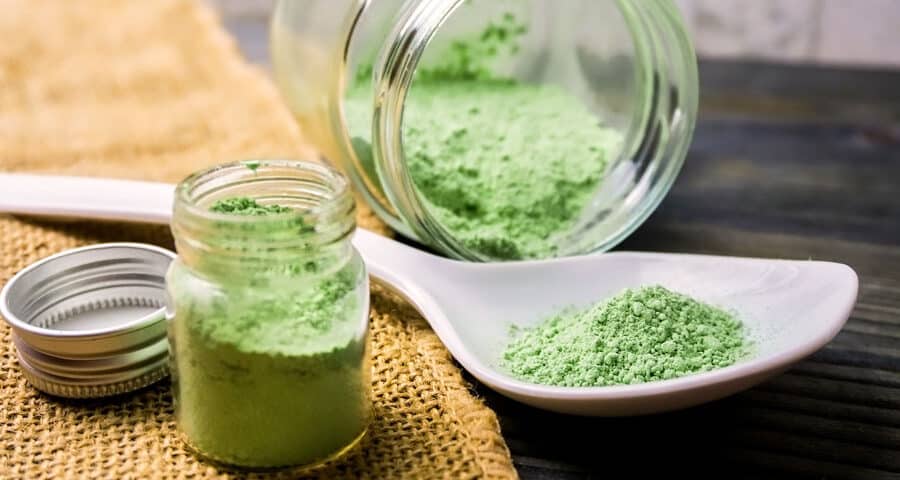
Kratom Tea and Health: Potential Benefits and Risks
April 9, 2023
The Future of Kratom Research: Potential Breakthroughs and Challenges Ahead
April 9, 2023Embarking on the journey of discovering the incredible world of kratom can be both exciting and overwhelming. With its numerous strains and versatile uses, it’s no wonder that kratom has taken the wellness community by storm. But like any botanical, finding the right balance between effectiveness and safety is crucial. That’s why determining your ideal kratom dosage is an essential step to unlocking the full potential of this powerful plant.
In this comprehensive guide, we will explore the factors that influence your perfect “sweet spot” for kratom dosage. We’ll also share expert tips and recommendations to help you make the most of your kratom experience.
Whether you’re a first-time user or a seasoned kratom enthusiast, this post will provide valuable insights and practical advice. It’ll help you achieve the desired effects while minimizing the risks. So, let’s dive in and unlock the secrets to finding your optimal kratom dosage!
Excitement and Challenges of Discovering Kratom
Kratom, a tropical tree native to Southeast Asia, has been used for centuries for its myriad of potential benefits. Its leaves contain alkaloids that interact with the brain’s opioid receptors. This can result in a range of effects, from pain relief to increased energy and focus. With an ever-growing number of enthusiasts sharing their positive experiences, it’s no wonder that the curiosity surrounding kratom has been steadily rising.
As a newcomer, navigating the world of kratom can be both thrilling and daunting. There are various vein types and strains to choose from, each with its unique set of properties and effects.
Moreover, it’s crucial to educate yourself on responsible usage to ensure a safe and positive experience. One of the most significant challenges you’ll face is finding the appropriate dosage that works best for you.
Importance of Finding the Right Kratom Dosage
Identifying the optimal kratom dosage is a crucial aspect of using this botanical effectively. Just like with any other supplement or medication, the dosage can significantly impact the benefits you experience.
Taking too little may result in no noticeable effects. Meanwhile, consuming too much can lead to unpleasant side effects or even health risks. By finding the right balance, you can enjoy kratom’s potential benefits while minimizing any adverse reactions.
Guide Overview
We developed this comprehensive guide to provide you with essential information and practical tips to determine your ideal kratom dosage. We’ll delve into the various factors that influence dosage. They include individual body factors, kratom strain, and form, as well as your tolerance and desired effects.
You’ll also learn about general dosage guidelines and safety precautions to ensure responsible use. By the end of this guide, you’ll be well-equipped to find your “sweet spot” and make the most of your kratom journey.
What Is Kratom?
Kratom, or Mitragyna Speciosa, is a fascinating tropical evergreen tree belonging to the coffee family. Found primarily in Southeast Asia in countries like Thailand, Indonesia, and Malaysia, kratom has been traditionally used for various medicinal purposes.
The leaves of the kratom tree contain unique compounds called alkaloids. Mitragynine and 7-hydroxymitragynine are the most notable among them. These alkaloids interact with your brain’s opioid receptors, resulting in the diverse effects that kratom is known for and sought after by many.
Different Strains and Their Properties
Kratom is available in a variety of strains, each offering its distinct characteristics and effects. These strains are generally classified based on the color of the leaf veins: red, white, or green. The color differences depend on the maturity of the leaves at the time of harvest and the unique alkaloid profiles of each strain.
- Red Vein Kratom: Red vein kratom is known for its strong relaxing, sedative, and pain-relieving properties. It is the most popular among people seeking relief from chronic pain or help with sleep issues. It is also believed to provide a sense of calm and well-being.
- White Vein Kratom: Often referred to as the “energetic” strain, white vein kratom is known for its stimulating effects. It is commonly used by those looking to improve focus, concentration, and combat fatigue. Some users also report mood-enhancing properties associated with white vein kratom.
- Green Vein Kratom: Offering a balanced blend of both red and white vein properties, green vein kratom is considered a versatile strain. It may provide a gentle energy boost, pain relief, and mood enhancement, without being overly stimulating or sedating.
It’s important to note that each person’s response to different strains may vary. Therefore, experimentation with various strains can help you identify which one works best for your specific needs.
Common Uses and Benefits
Kratom has gained popularity in recent years for its potential to help with various health and wellness concerns. Some common uses and benefits associated with kratom include:
- Pain relief: Many users report that kratom helps alleviate both acute and chronic pain. This makes it an attractive alternative to traditional pain medications.
- Anxiety and stress reduction: Kratom’s calming effects may help users manage anxiety and stress and promote a sense of relaxation and well-being.
- Energy and focus: Certain kratom strains, particularly white and green vein, are known to provide a natural energy boost. They also offer increased mental clarity, making them popular among those looking to enhance productivity.
- Mood enhancement: Kratom may help lift mood and alleviate symptoms of mild depression.
- Sleep aid: Some strains, particularly red vein kratom, are often used to promote relaxation and improve sleep quality.
While many people report positive experiences with kratom, it’s essential to remember that individual responses may vary. Consulting with a healthcare professional before using kratom, especially if you have any pre-existing medical conditions or are taking medications, is always recommended.
Factors Influencing Kratom Dosage
Individual Body Factors
- Weight: Your body weight plays a significant role in determining the right kratom dosage. This means that heavier individuals may require a larger dose to experience the desired effects. Meanwhile, lighter individuals might achieve the same results with a smaller amount.
- Age: Age can also influence your kratom dosage. Older individuals may be more sensitive to the effects of kratom and thus require a lower dose compared to younger users.
- Metabolism: Your metabolic rate, which can be affected by factors like genetics, diet, and exercise, impacts how your body processes kratom. Those with a faster metabolism might require a higher dose, as their bodies break down kratom more rapidly. In contrast, individuals with a slower metabolism may need a lower dose to achieve the desired effects.
Kratom Strain and Form
- Strain Differences: As discussed earlier, various kratom strains have different properties and effects. Some strains may be more potent, requiring a smaller dose to achieve the desired outcome, while others might necessitate a larger amount.
- Powder, Capsules, or Extracts: The form in which you consume kratom can also influence your dosage. Kratom powder, capsules, and extracts all differ in potency. Extracts, for instance, are a highly concentrated product and typically require a smaller dose compared to powder or capsules.
Tolerance and Experience Level
Your experience with kratom and your body’s tolerance to its effects can significantly impact your ideal dosage. Beginners should start with a lower dose to gauge their body’s response and slowly increase it over time as needed. More experienced users may have developed a tolerance to kratom, requiring a higher dose to achieve the desired effects. It’s essential to listen to your body and adjust the dosage accordingly, as everyone’s experience with kratom can vary.
Purpose and Desired Effects
Your intended purpose for using kratom and the effects you want to achieve will also influence your ideal dosage. For instance, if you’re looking for mild pain relief or relaxation, a lower dose might suffice. On the other hand, if you’re seeking more significant relief you might require a higher dose. Understanding your goals and desired effects will help you fine-tune your kratom dosage for the best possible experience.
General Dosage Guidelines
Starting with a Low Dose
If you’re new to kratom or trying a new strain, it’s essential to start with a low dose to gauge your body’s response. A lower dose typically ranges from 1 to 2 grams for most individuals.
Beginning with a smaller amount allows you to assess your body’s reaction to the specific strain. You can also avoid any potential adverse effects you may feel with higher doses. Remember, it’s always better to err on the side of caution and gradually work your way up if needed.
Gradual Adjustments
Once you have started with a low dose and assessed your body’s response, you can make gradual adjustments to find your optimal dosage. It’s recommended to increase the dose in small increments of 0.5 to 1 gram at a time. Allow at least a few days between adjustments to give your body the opportunity to adapt to the new dosage. By making slow and controlled adjustments, you minimize the risk of adverse effects and ensure you’re moving closer to your ideal kratom dosage.
Listening to Your Body
One of the most critical aspects of determining your ideal kratom dosage is paying attention to your body’s signals. Every individual is unique, and your response to kratom may differ from someone else’s.
Keep track of how your body reacts to different doses and strains, and make adjustments based on your personal experience. If you notice any adverse effects or signs of discomfort, reduce the dose or consider taking a break from kratom. Staying in tune with your body will help you find the perfect balance that provides the desired benefits while minimizing potential risks.
Tips for Finding Your Ideal Dosage
Keeping a Dosage Journal
Maintaining a dosage journal can be an invaluable tool in finding your ideal kratom dosage. Documenting your experiences with different strains, doses, and their effects can help you identify patterns and fine-tune your dosage. Note down essential details such as the strain, form, dose, time of consumption, and any effects or side effects you experience. Over time, this information will provide you with valuable insights into what works best for you and guide you toward your optimal dosage.
Rotating Strains to Maintain Effectiveness
Rotating between different kratom strains can help prevent the development of tolerance and ensure that the plant’s effects remain effective.
Switching strains regularly allows you to experience the unique benefits of each variety. It also reduces the likelihood of your body becoming accustomed to a specific strain. Ideally, rotate between a few different strains, giving each one a break for several days or weeks before reintroducing it into your routine.
The Role of Patience and Consistency
Finding your ideal kratom dosage requires patience and consistency. It’s essential to give your body enough time to adjust to new doses or strains and avoid making too many changes too quickly. By being patient and consistent in your approach, you’ll be able to make more informed decisions about your dosage. As a result, you’ll be able to find the “sweet spot” that works best for you.
Understanding the “Less is More” Principle
In the world of kratom, the “less is more” principle often holds true. Many users find that lower doses provide the desired effects more efficiently than higher doses. High doses might not only lead to potential adverse effects but also contribute to the rapid development of tolerance.
By starting with a low dose and slowly working your way up, you can often achieve the desired benefits. Meanwhile, you can minimize the risk of side effects or tolerance buildup. Embrace the “less is more” mindset, and remember that sometimes a smaller dose can yield better results.
Safety Precautions and Responsible Use
Avoiding Overconsumption
One of the essential aspects of using kratom safely is to avoid overconsumption. Taking excessively high doses can lead to undesirable side effects, increased tolerance, or potential health risks. Always start with a low dose and gradually work your way up as needed. Remember to pay attention to your body’s signals and respect your personal limits, ensuring that you enjoy kratom’s benefits without putting yourself at risk.
Recognizing Signs of Adverse Reactions
Being aware of potential adverse reactions to kratom can help you respond quickly and make necessary adjustments to your dosage. Some common side effects may include nausea, dizziness, headache, constipation, or increased heart rate. If you experience any of these symptoms, consider reducing your dose or taking a break from kratom until they subside. If severe symptoms persist or worsen, seek medical advice from a healthcare professional.
Combining Kratom with Other Substances
Mixing kratom with other substances, such as prescription medications, alcohol, or recreational drugs, can cause potentially dangerous interactions or exacerbate side effects. Consult with a healthcare professional before using kratom if you are taking any medications, have pre-existing medical conditions, or are pregnant or breastfeeding. Always prioritize safety and practice responsible use to ensure a positive kratom experience.
Legal Considerations
Before buying kratom, it’s crucial to be aware of the legal status of kratom in your country or region. While kratom is legal in many places, some countries and states have imposed restrictions or bans on its sale and use.
Make sure to stay informed about the current legal status of kratom in your area. Adhere to any regulations to avoid potential legal consequences. Practicing responsible use and staying informed about kratom’s legality will help ensure a safe and enjoyable experience with this intriguing botanical.
Recap on the Importance of Finding the Right Kratom Dosage
Finding the right kratom dosage is crucial to maximizing its potential benefits and minimizing any risks associated with its use. Take into account factors such as individual body characteristics, kratom strain and form, tolerance, and desired effect. This will help you work towards discovering your ideal dosage. Starting with a low dose, making gradual adjustments, and listening to your body are key components of this process.
As you continue your journey with kratom, remember that each individual’s experience is unique. It may take some time and experimentation to find your perfect balance. Embrace the learning process, and don’t be afraid to explore different strains and dosages while always prioritizing safety and responsible use.
Keep a dosage journal, rotate strains, and practice patience and consistency. This way, you’ll be well on your way to discovering the kratom experience that works best for you. Stay committed to responsible use, and enjoy the journey towards unlocking kratom’s full potential.
Frequently Asked Questions:
How much kratom should I take for my first dose?
If you’re new to kratom, it’s recommended to start with a low dose of around 1 to 2 grams. This allows you to gauge your body’s response and adjust the dosage gradually based on your personal experience.
How long should I wait between kratom doses?
It’s advisable to wait at least 4 to 6 hours between doses to give your body time to process and eliminate the kratom. This can help minimize potential side effects and reduce the risk of building tolerance.
Can I take kratom daily?
While some users take kratom daily without experiencing any issues, it’s generally recommended to use kratom in moderation to avoid building tolerance or dependence. Consider taking regular breaks or rotating strains to maintain the plant’s effectiveness.
How long does it take for kratom to start working?
Kratom typically begins to take effect within 30 to 45 minutes after consumption. However, this can vary based on individual factors such as metabolism and tolerance.
Can I mix kratom with other substances or medications?
Combining kratom with other substances, such as prescription medications, alcohol, or recreational drugs, can lead to potentially dangerous interactions or worsen side effects. Consult with a healthcare professional before using kratom if you are currently taking any medications or have pre-existing medical conditions.
What should I do if I experience side effects from kratom?
If you experience side effects such as nausea, dizziness, headache, or increased heart rate, consider reducing your dose. Alternatively, take a break from kratom until the symptoms subside. If severe symptoms persist or worsen, seek medical advice from a healthcare professional.
How can I find the right kratom strain for me?
Finding the right strain may require some experimentation, as each strain offers unique properties and effects. Consider trying a few different strains and keeping a dosage journal to document your experiences. This will help you identify which strain best suits your needs and preferences.
What are the differences between kratom powder, capsules, and extracts?
Kratom powder is made from ground kratom leaves and can be ingested directly or mixed with food and beverages. Capsules contain kratom powder in a convenient, pre-measured form. Extracts are highly concentrated forms of kratom, typically requiring a smaller dose compared to powder or capsules. Each form has its advantages and may affect dosage requirements, so choose the one that best fits your needs and preferences.








